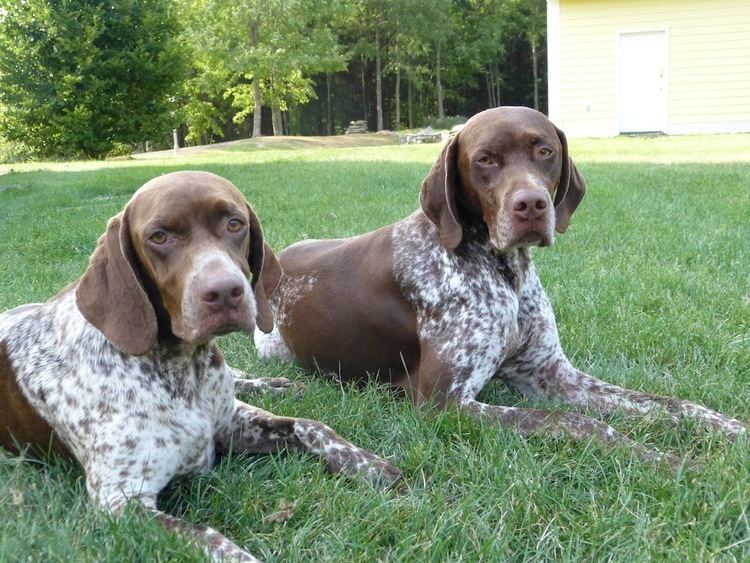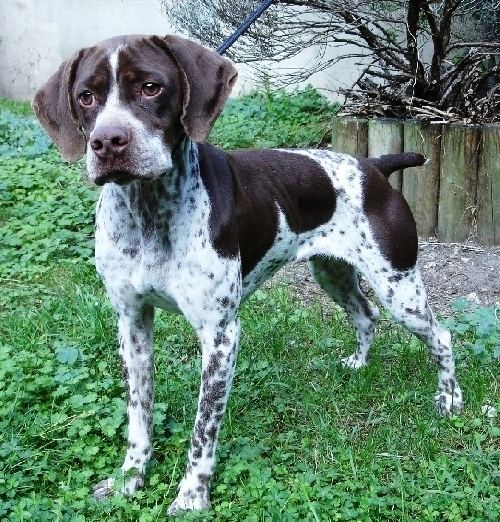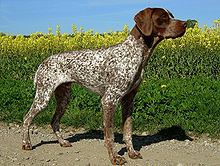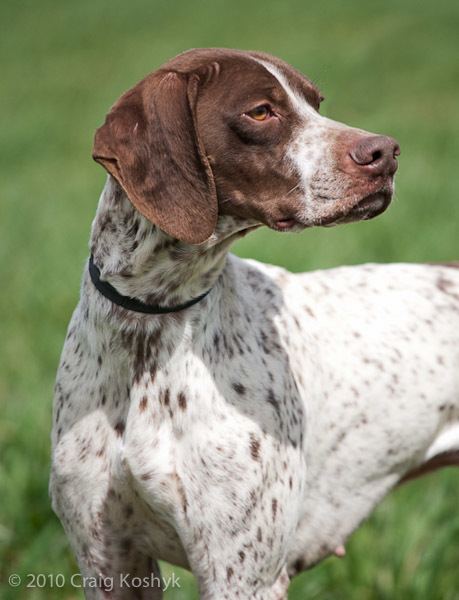CKC Group 1 - (sporting) Scientific name Canis lupus familiaris Origin France | Group 1 - (sporting) standard Color Red & White | |
 | ||
Other names French Pointing Dog - Gascogne Type;
Braque Francais, de Grande Taille Coat Thick and well furnished, finer on the head and ears. Colour Chestnut brown, either solid or mixed with white. With or without ticking or roaning or tan markings. FCI Group 7, Section 1.1 Continental Pointing Dogs: Pointer type #133 Temperament Athletic, Obedient, Sociable Height Female: 47–56 cm, Male: 47–58 cm Weight Female: 17–25 kg, Male: 17–25 kg Similar Braque du Bourbonnais, Braque Saint‑Germain, Braque d'Auvergne, French Spaniel, Ariege Pointer | ||
Woodcock hunting 2015 braque francais
The Braques français are hunting dogs, from a very old type of gun dog used for pointing the location of game birds for a hunter. There are two breeds of Braque français, both from the south of France, the Braque français, type Gascogne (French Pointing Dog - Gascogne type, larger size) and the Braque français, type Pyrénées (French Pointing Dog - Pyrenean type, smaller size) They are popular hunting dogs in France, but are seldom seen elsewhere.
Contents
- Woodcock hunting 2015 braque francais
- History
- Hunting use
- Appearance
- Differences
- Health
- Temperament
- Additional reading
- References

History
The original Braque français type of pointing dog has existed since the fifteenth century. Over the centuries the dogs were taken to other countries and were crossed with other breeds. When a search was made at the end of the nineteenth century to find the original dogs, two separate regional varieties were found. They may be descended from the Old Spanish Pointer or Pachon Navarro, and the now extinct Southern Hound.

The first breed club was formed in 1850, and the standards for both breeds were written in 1880. It is recognised in its home country by the French Kennel Club (Société Centrale Canine, S.C.C) and internationally by the Fédération Cynologique Internationale. The S.C.C. prohibits inbreeding or linebreeding and will not register any dog with common ancestors in the first three generations of its pedigree. Of the major kennel clubs in the English-speaking world, only the Canadian Kennel Club in Canada and the United Kennel Club in the U.S. recognise them. The Canadian Kennel Club recognises one breed, the Braque Français (Gascogne) in its Sporting Dogs Group and the United Kennel Club recognises both breeds, in its Gundog Group, with the names Braque Francais De Grande Taille and Braque Francais, De Petite Taille - petite taille (smaller size) means the Pyrenean is smaller than the Gascogne, and does not mean that it is a little dog. The breeds are also recognized by many minor registries, hunting clubs, and internet-based dog registry businesses under various versions of the names, and promoted as rare breeds for those seeking unique pets.
Hunting use

The Braque français breeds are not just pointers, but versatile hunting dogs that can retrieve, flush, and even trail game in all sorts of terrain. The Pyrénées is a quick dog that can move fast without sprinting, while the Gascogne is a slower moving dog.
Appearance

Both breeds of Braque français are medium to large sized dogs with long legs and long drop ears. The coat is short, and chestnut brown or white speckled with brown in colour, often with one or more large brown spots. The head is usually brown. The Gascogne is about 10 centimetres (3.9 in) taller at the withers than the Pyrenean.
Differences


Faults (elements of appearance that indicate that the dog should not be bred) in both breeds include no tail (anury), split nose or depigmented nose, syndactyly (toes grown together), surplus toes, or absence of toes.
Health
No specific diseases or claims of extraordinary health have been documented for this breed.
Temperament
Ideal Braque Francais temperament is described as "friendly, sociable, gentle and submissive" and, as a soft breed, should not be subjected to harsh training methods. Temperament of individual dogs can vary, and all dogs must be well socialized with people and other animals at an early age in order to be a good pet.
